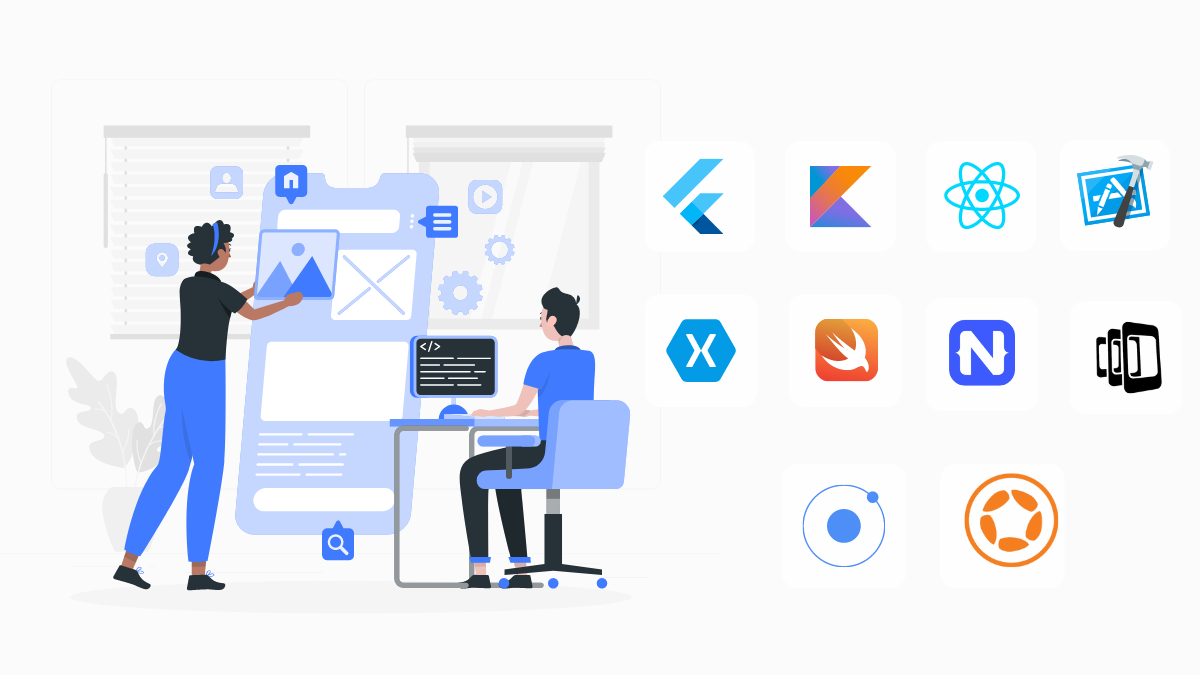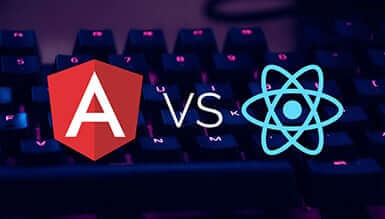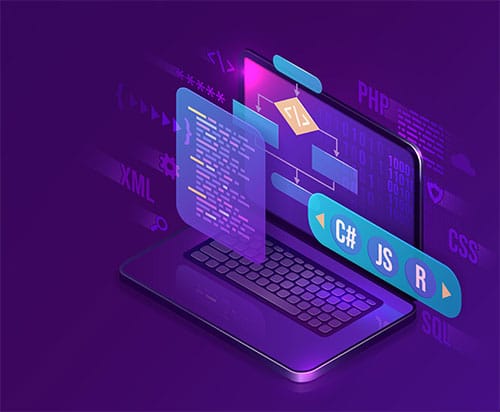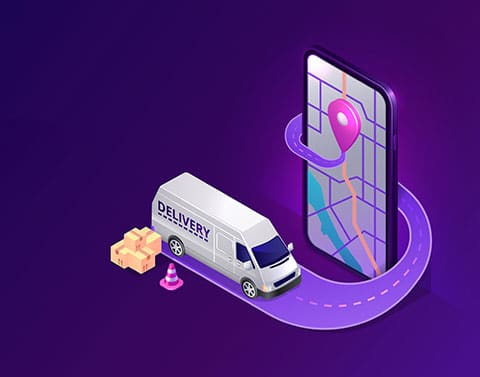In today’s rapidly evolving digital landscape, mobile apps have become an integral part of businesses across various industries. Whether you’re a startup or an established enterprise, developing high-quality mobile apps that deliver exceptional user experiences is crucial for success. To accomplish this, choosing the right app development framework is paramount.
App development frameworks provide developers with a set of tools, libraries, and guidelines that streamline the development process, enhance productivity, and enable the creation of feature-rich mobile apps. Moreover, with numerous frameworks available in the market, choosing the right framework for mobile app development can be challenging.
In this blog, we will explore the top app development frameworks for 2025, highlighting their key features, benefits, use cases, and industries. Moreover, by understanding the strengths and capabilities of these frameworks, you can make an informed decision and choose the one that aligns with your development goals and requirements.
So, let’s dive into the world of best app development frameworks and discover the top contenders for building high-quality mobile apps in 2025.
What is a mobile app development framework?
A mobile app development framework is a collection of pre-written code, libraries, tools, and templates that developers use to streamline the app development process. Furthermore, it provides a structured environment and predefined functions to facilitate faster and more efficient development. Moreover, frameworks eliminate the need to write code from scratch, enabling developers to focus on building unique app features and functionalities.
Why is choosing the right app development framework crucial for businesses?
Selecting the right app development framework can significantly impact the success of your mobile app project. Here are a few reasons why it is crucial:
- Time and Cost Efficiency: Frameworks offer ready-to-use components, reducing development time and effort. Furthermore, this translates to cost savings, making it an attractive option for businesses with budget constraints.
- Increased Productivity: In addition with built-in features and libraries, frameworks boost developer productivity, enabling them to focus on core functionalities rather than reinventing the wheel.
- Cross-Platform Compatibility: Many frameworks support cross-platform development, allowing you to build apps for multiple platforms, such as iOS and Android, using a single codebase.
- Enhanced User Experience: Frameworks often provide tools and resources to create visually appealing and user-friendly interfaces, resulting in improved user experiences.
What are the key factors to consider when selecting an app development framework?
Before diving into the top app development frameworks, let’s discuss the key factors to consider when making your selection:
- Platform Compatibility: Determine whether the framework supports the platforms (iOS, Android, etc.) you intend to target. Furthermore, it consider whether it provides native or cross-platform development capabilities.
- Performance: Evaluate the framework’s performance metrics, such as app speed, responsiveness, and memory usage. Opt for frameworks that optimize performance for a smooth user experience.
- Ease of Use: Consider the learning curve associated with the framework. Moreover, a developer-friendly framework with clear documentation and a supportive community can expedite the development process.
- Community Support and Documentation: Look for frameworks with an active community that provides regular updates, bug fixes, and ample documentation. Furthermore, this ensures you have access to resources and support when needed.
- Cost: Consider the licensing terms, development costs, and any additional expenses associated with the framework. Open-source app development frameworks often offer cost advantages compared to proprietary ones.
- User Interface and Experience: Assess the framework’s capabilities for creating visually appealing and intuitive user interfaces. Moreover, look for features such as pre-built UI components and customizable themes.
- Scalability and Futureproofing: Choose a framework that allows your app to scale seamlessly as your user base grows. Moreover, it should support future upgrades, security enhancements, and new platform features.
Top 10 Mobile App Development Frameworks for 2025
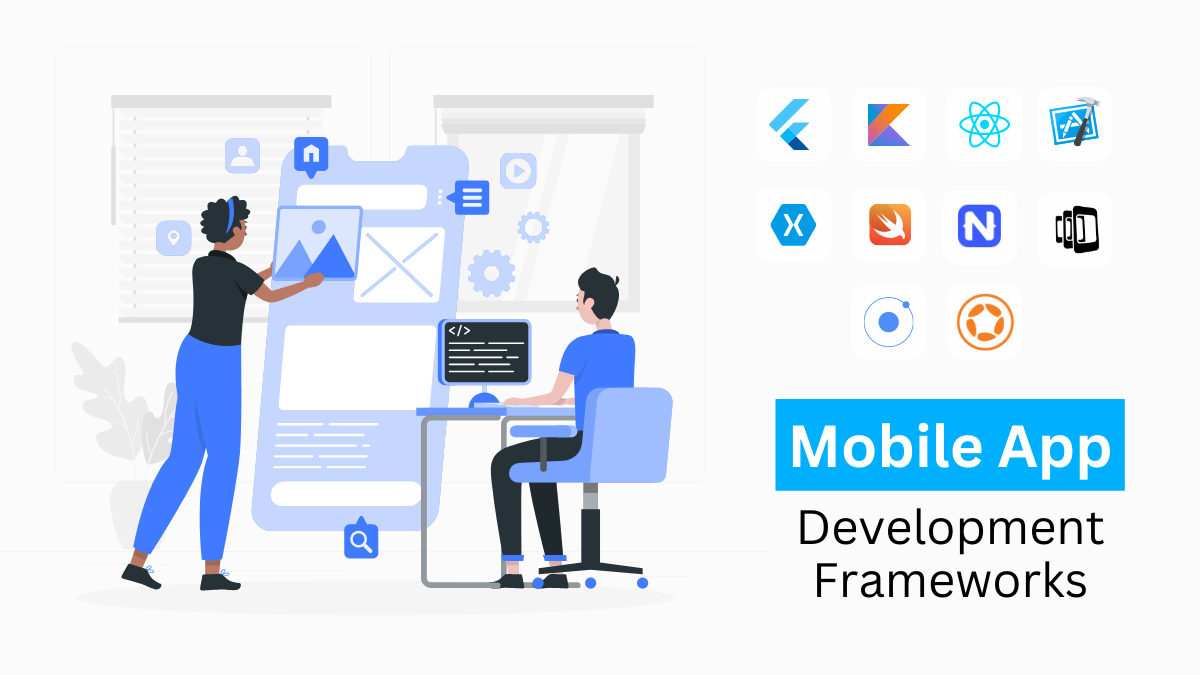
Now, let’s explore the top app development frameworks for 2025. Moreover, these frameworks have proven their worth in the industry and are widely used by developers for building high-quality mobile apps.
1. Flutter
Flutter is a popular open-source UI toolkit by Google for building natively compiled applications for mobile, web, and desktop from a single codebase. It is gaining popularity among developers due to its numerous advantages. Firstly, it allows for faster and more efficient app development as it uses a single codebase for creating both iOS and Android applications. This eliminates the need for writing separate code or using cross-platform frameworks. Secondly, Flutter’s hot reload feature enables instant code changes and updates, making the development process significantly quicker and more seamless.
Key features and benefits:
- The Hot Reload feature allows real-time code changes and updates, speeding up the development process.
- Moreover, it provides a rich set of customizable UI components, enabling developers to create visually stunning apps.
- Dart programming language simplifies app development with its clean syntax and robust performance.
- Excellent performance and native-like experience across platforms.
- Widely used by startups and businesses looking for cross-platform development capabilities.
Use cases and industries:
- E-commerce apps
- Social networking apps
- On-demand service apps
2. React Native
Developed by Facebook, React Native is an open-source app development framework for building cross-platform mobile apps using JavaScript and React.
Key features and benefits:
- Offers a wide range of pre-built UI components, allowing developers to create visually appealing interfaces.
- Hot Reload feature enables real-time updates, enhancing the development experience.
- Provides seamless integration with native components for platform-specific functionalities.
- Well-suited for businesses aiming to develop apps for both iOS and Android platforms.
Use cases and industries:
- Social media apps
- Travel and tourism apps
- Lifestyle and fitness apps
3. Xamarin
Xamarin is a Microsoft-owned framework that allows developers to build cross-platform mobile apps using C# and .NET. Moreover, in today’s tech-driven world, is gaining immense popularity due to its ability to develop cross-platform mobile applications that work seamlessly on multiple operating systems, like iOS, Android, and Windows. Furthermore, its key strength lies in sharing a significant portion of the codebase across different platforms, saving time and effort for developers.
Key features and benefits:
- Moreover, it provides access to native APIs and platform-specific functionalities.
- Code sharing capabilities enable significant time and effort savings.
- Robust community support and extensive documentation.
- Ideal for businesses already invested in the Microsoft ecosystem.
Use cases and industries:
- Enterprise apps
- Healthcare apps
- Field service apps
4. Native Script
Native Script is an open-source app development framework that enables developers to build native mobile apps using JavaScript, TypeScript, or Angular.
Key features and benefits:
- Access to native APIs and platform-specific capabilities.
- Supports the use of popular web technologies, simplifying the development process.
- Moreover, it provides a rich library of UI components and themes for creating visually appealing apps.
- Suitable for businesses seeking a balance between native performance and cross-platform development.
Use cases and industries:
- Banking and finance apps
- Education apps
- Media and entertainment apps
5. Ionic
Ionic is an open-source framework for building cross-platform mobile apps using web technologies like HTML, CSS, and JavaScript. It is a powerful and widely used framework for developing cross-platform mobile applications. Additionally, Ionic’s ability to seamlessly integrate with popular frontend technologies, such as Angular and React, provides developers with a familiar and efficient development environment. Furthermore, Ionic’s cross-platform nature allows for code reusability across different platforms, saving time and effort in app development. Overall, Ionic’s combination of aesthetic appeal, versatility, and efficiency makes it the preferred choice for developers looking to build modern and responsive mobile applications.
Key features and benefits:
- Offers a wide range of pre-built UI components, themes, and plugins.
- Furthermore, it seamlessly integrates with Angular, enabling developers to leverage its features and capabilities.
- Allows for easy deployment to multiple platforms, including iOS, Android, and Progressive Web Apps (PWAs).
- Popular among startups and businesses with limited resources and tight deadlines.
Use cases and industries:
- On-demand delivery apps
- Event management apps
- Content-focused apps
6. Kotlin Multiplatform Mobile (KMM)
Kotlin Multiplatform Mobile (KMM) is a modern cross-platform framework developed by JetBrains, designed to build mobile apps using Kotlin. KMM is gaining popularity in the app development community due to its ability to provide a seamless and efficient cross-platform solution. This technology allows developers to create mobile applications using a single codebase that can be shared across multiple platforms, such as Android and iOS.
Key features and benefits:
- Facilitates code sharing between iOS and Android platforms.
- Moreover, it provides platform-specific abstractions for seamless integration with native APIs and functionalities.
- Takes advantage of Kotlin’s concise syntax and safety features.
- Suitable for businesses with existing Kotlin codebases or those aiming to adopt Kotlin as their primary language.
Use cases and industries:
- Productivity apps
- Messaging apps
- Utility apps
7. Xcode
Xcode is Apple’s integrated development environment (IDE) used for iOS app development for Apple platforms, including iOS, macOS, watchOS, and tvOS. It is an integrated development environment (IDE) designed specifically for developing software applications for Apple platforms, including iOS, macOS, watchOS, and tvOS. Moreover, it provides developers with a comprehensive set of tools and features to streamline the entire development process, from writing code to testing and debugging applications. Furthermore, Xcode is widely recognized as an essential tool for Apple platform developers, offering a powerful and efficient environment to create innovative and robust applications
Key features and benefits:
- It offers a comprehensive set of tools, including a code editor, debugger, and interface builder, to streamline the app development process.
- Xcode supports multiple programming languages such as Swift and Objective-C.
- Moreover, it provides various frameworks and libraries, making it easier to integrate native iOS features into the app.
Use cases and industries:
- Xcode is the go-to choice for businesses targeting Apple users and developing iOS apps exclusively for Apple platforms.
8. Swift UI
Swift UI is a modern UI framework developed by Apple for building apps across all Apple platforms.
Key features and benefits:
- Utilizes a declarative syntax, simplifying the app development process.
- Furthermore, it provides a wide range of customizable UI components and animations.
- Offers real-time previews, allowing developers to see changes instantly.
- Well-suited for businesses targeting Apple users and looking for native development experience.
Use cases and industries:
- Lifestyle and wellness apps
- Gaming apps
- Productivity and utility apps
9. Adobe PhoneGap
Adobe PhoneGap, previously known as Apache Cordova, is a popular open-source framework for building hybrid mobile apps using web technologies like HTML, CSS, and JavaScript. This mobile application development framework that allows developers to create cross-platform apps using web technologies such as HTML, CSS, and JavaScript. It simplifies the process of building mobile applications by providing a set of tools and APIs that enable developers to write code once and deploy it across multiple platforms including iOS, Android, Windows, and more.
Key features and benefits:
- Supports the use of HTML, CSS, and JavaScript for app development.
- Simplifies the development process with its single codebase approach.
- Provides access to native device functionalities through plugins.
- Well-suited for businesses looking for rapid app development and deployment.
Use cases and industries:
- Business productivity apps
- Education and e-learning apps
- Travel and tourism apps
10. Corona SDK
Corona SDK is a lightweight, cross-platform framework for building 2D games and apps. Furthermore, it utilizes Lua programming language, known for its simplicity and fast execution. Corona SDK is a popular software development kit that allows developers to create cross-platform applications for mobile devices. Moreover, with its easy-to-use interface and lightweight nature, Corona SDK provides a hassle-free environment for both beginners and experienced programmers to build interactive and visually appealing games, educational apps, and other mobile applications.
Key features and benefits:
- Provides extensive documentation and a rich library of APIs and plugins.
- Offers real-time testing on devices, speeding up the development and debugging process.
- Popular among game developers and businesses aiming to build lightweight apps.
Use cases and industries:
- Mobile gaming apps
- Children’s educational apps
- Interactive storytelling apps
Also Read: Top 10 Web Development Frameworks (Frontend & Backend)
What are the best practices for implementing these frameworks in your app development process?
To ensure the successful integration of app development frameworks, consider the following best practices:
- Thoroughly research and evaluate frameworks: Understand the specific requirements of your project and choose a framework that aligns with those needs. Furthermore, consider factors like platform compatibility, performance, ease of use, and community support.
- Stay updated with the latest framework versions: Regularly update your chosen framework to leverage new features, bug fixes, and security enhancements. Moreover, Stay connected with the framework’s community for the latest updates and releases.
- Utilize available resources and documentation: Take advantage of the vast resources, tutorials, and documentation provided by the framework’s community. Moreover, this will help you navigate any challenges and make the most out of the framework’s capabilities.
- Conduct thorough testing: Prioritize rigorous testing throughout the development process to identify and resolve any issues or bugs. Moreover, perform compatibility testing across different devices and platforms to ensure optimal performance.
- Optimize for performance and speed: Implement performance optimization techniques recommended by the framework’s documentation. Moreover, minimize unnecessary code, optimize resource usage, and conduct performance profiling to enhance app speed and responsiveness.
How can you ensure seamless integration of the chosen framework with your existing IT infrastructure?
To ensure seamless integration of the chosen framework with your existing IT infrastructure, follow these steps:
- Evaluate compatibility: Determine if the framework is compatible with your existing technology stack and infrastructure. Furthermore, consider factors such as programming languages, databases, hosting environments, and APIs.
- Plan for migration and data transfer: If migrating from an existing app or framework, develop a clear migration plan and consider how to transfer data and functionalities seamlessly. Furthermore, Minimize disruptions during the transition process.
- Evaluate integration capabilities: Assess how well the framework integrates with your existing tools, libraries, and systems. Moreover, ensure compatibility with your development environment, version control systems, and continuous integration/continuous deployment (CI/CD) pipelines.
- Train and upskill your development team: Provide training and resources to familiarize your development team with the chosen framework. Moreover, encourage continuous learning and keep up with the framework’s updates and advancements.
- Test and iterate: Conduct thorough testing after integrating the framework to identify any compatibility issues or conflicts with your existing infrastructure. Furthermore, address any issues promptly and iterate on the integration process if necessary.
Conclusion
In the ever-evolving world of mobile app development trends, choosing the right framework is essential for building high-quality apps that meet user expectations. Furthermore, the top app development frameworks for 2025 discussed in this blog provide a solid foundation for creating feature-rich and visually stunning mobile apps. Moreover, by considering factors such as platform compatibility, performance, ease of use, community support, and cost, you can select a framework that best aligns with your business goals and development requirements.
Remember to stay updated with the latest versions, leverage available resources and documentation, and conduct thorough testing to ensure a successful implementation of the chosen framework. Moreover, with the right framework and a skilled app development team, you can bring your app ideas to life and deliver exceptional user experiences.
Encourage exploration and experimentation with different frameworks to find the best fit for your unique app development needs. Furthermore, if you require professional mobile app development services, don’t hesitate to reach out to our experienced team of skilled app developers at JumpGrowth. Furthermore, we are here to help you transform your app ideas into reality.
Looking for the right App Development Services
Our Professional app developers transform your app ideas into reality.
Frequently Asked Questions
Q: What are the benefits of using a mobile app development framework?
A: Using a mobile app development framework offers benefits such as time and cost efficiency, increased productivity, cross-platform compatibility, and enhanced user experience.
Q: Can I use multiple frameworks together for app development?
A: While it is possible to use multiple frameworks together, it’s important to carefully evaluate compatibility and potential conflicts between frameworks. Moreover, it is generally advisable to choose a single framework that meets your development requirements.
Q: What are the advantages of using open-source app development frameworks?
A: Open-source app development frameworks provide benefits such as cost savings, community support, flexibility for customization, and regular updates and improvements driven by a vibrant developer community.
Q: Can I migrate an existing app to a different framework?
A: Yes, it is possible to migrate an existing app to a different framework. However, it requires careful planning, consideration of compatibility issues, data transfer, and potential code rewrites.
Q: How do app development frameworks impact the overall app development cost?
A: App development frameworks can impact the overall cost by reducing development time and effort, providing cost-effective cross-platform development options, and offering open-source alternatives that eliminate licensing fees. However, the total cost also depends on factors such as complexity, features, and customization requirements
Related Blogs:
 AptaCloud is your trusted Microsoft-certified partner, specializing in delivering a comprehensive range of cloud and infrastructure solutions tailored to meet your business needs. From Microsoft Azure and Office 365 to advanced infrastructure management services, we empower businesses with cutting-edge technology that ensures scalability, security, and operational efficiency. Our expertise extends to implementing, managing, and optimizing Microsoft services, enabling organizations to streamline their operations, enhance productivity, and reduce costs. At AptaCloud, we are committed to providing reliable, secure, and innovative solutions that help businesses thrive in the ever-evolving digital landscape.
AptaCloud is your trusted Microsoft-certified partner, specializing in delivering a comprehensive range of cloud and infrastructure solutions tailored to meet your business needs. From Microsoft Azure and Office 365 to advanced infrastructure management services, we empower businesses with cutting-edge technology that ensures scalability, security, and operational efficiency. Our expertise extends to implementing, managing, and optimizing Microsoft services, enabling organizations to streamline their operations, enhance productivity, and reduce costs. At AptaCloud, we are committed to providing reliable, secure, and innovative solutions that help businesses thrive in the ever-evolving digital landscape. AptaCloud is your trusted Microsoft-certified partner, specializing in delivering a comprehensive range of cloud and infrastructure solutions tailored to meet your business needs. From Microsoft Azure and Office 365 to advanced infrastructure management services, we empower businesses with cutting-edge technology that ensures scalability, security, and operational efficiency. Our expertise extends to implementing, managing, and optimizing Microsoft services, enabling organizations to streamline their operations, enhance productivity, and reduce costs. At AptaCloud, we are committed to providing reliable, secure, and innovative solutions that help businesses thrive in the ever-evolving digital landscape.
AptaCloud is your trusted Microsoft-certified partner, specializing in delivering a comprehensive range of cloud and infrastructure solutions tailored to meet your business needs. From Microsoft Azure and Office 365 to advanced infrastructure management services, we empower businesses with cutting-edge technology that ensures scalability, security, and operational efficiency. Our expertise extends to implementing, managing, and optimizing Microsoft services, enabling organizations to streamline their operations, enhance productivity, and reduce costs. At AptaCloud, we are committed to providing reliable, secure, and innovative solutions that help businesses thrive in the ever-evolving digital landscape.

